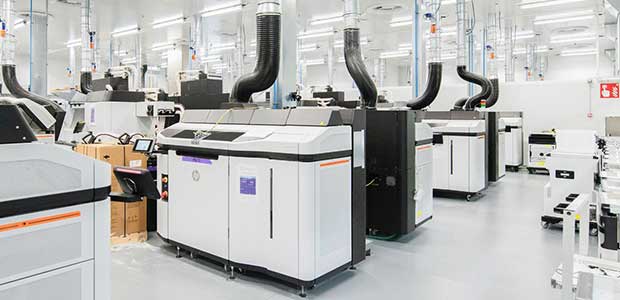
The Green Quality of 3D Printing: HP Printing Celebrates Earth Day
This Earth Day, HP Printing is celebrating by talking about the benefits of 3D printing technology, and what that could mean for an individual, a business and the future of the earth.
- By Amanda Smiley
- Apr 22, 2020
For Earth Day’s 50th anniversary, it’s only fitting that we recognize the many ways we (as people, companies, organizations, countries and a world) are working towards a better earth and not away from it. As a recognized, eco-friendly company, HP Printing is not new to the idea of making supply chains, systems and products environmentally friendly.
Ramon Pastor, Interim Head of 3D Printing and Digital Manufacturing, answered some questions about 3D printing and how it is not only growing, but also becoming an incredibly important technology for a number of reasons.
Not only is 3D printing helping provide healthcare workers with PPE for COVID-19, but it is also helping systems and supply chains simplify and clean their resource use for the good of the earth and the happiness of the customer. HP of all companies can tell you that a company’s efforts toward making eco-friendly products and the satisfaction of the customer are no longer mutually exclusive.
3D printing may just be a perfect bridge for those two parties. Here are Pastor’s responses:
Why is 3D printing important right now?
“Technology has the ability to make life better for everyone, everywhere. Digital manufacturing enables this by making production faster and increasingly responsive to the immediate needs of people in a particular place or time, and 3D printing technology is being used now to produce the lifesaving supplies our medical professionals and first responders need. While 3D printing requires a relearning process, from conceptualization, to design, to production, to distribution, this time of need has shown us why experts from every industry must rally behind its life-changing potential.”
How does digital manufacturing contribute to sustainable impact?
“Technology has the ability to make life better for everyone, everywhere. Digital manufacturing has a transformational role to play in creating a more sustainable, more collaborative world. It circumvents broken supply chains and makes scalability more viable. All of this is in service of people—the creators, the workforces and the customers who benefit from a cleaner, more collaborative way of producing.”
Why is collaboration important right now?
“Our industry mobilized quickly around COVID-19, not only because of technology, but also because of partnerships. Businesses working together with government agencies, academics, and changemakers in markets around the world have convened resources and proven to be a powerful ecosystem with a shared vision for saving lives and facilitating a more sustainable future—something that no single entity could have done alone. Through collaboration, our industry has been able to share ideas and transform workflows in a matter of hours or days, not months or years.”
How are you working alongside your partners to make a sustainable impact?
“Within the first four weeks of the virus spreading in the U.S., HP produced 50,000 medical parts, like masks and swabs, but our partners amplified that effort with tens of thousands more. For example, one of our partners, SmileDirectClub, repurposed more than 30 of its HP 3D printers to produce face shields at scale—up to 10,000 a day—while its research and development team worked around the clock on innovative filtration masks.”
How does community play a role in innovation?
“As we work to protect everyone’s wellbeing, we need to think big without overlooking what’s directly in front of us. Looking to our own backyards and investing in our communities helps keep our innovations personal. If we aim to create solutions that serve our own people, exponential progress will follow.”
How and why is HP contributing to the COVID-19 response?
“To meet the most urgent needs, we’ve converted our research-and-development facilities in Barcelona, Spain; Corvallis, OR; San Diego, CA; and Vancouver, WA into full-scale production factories for face masks and shields, nasal swabs, respirator parts, and more, and we’re collaborating with partners around the world in a coordinated effort to increase production.
This time has been a sobering reminder that we are all linked, regardless of who we are and where we come from. This pandemic has been devastating to communities all over the globe, and we must rely on ingenuity, invention, and each other to contribute to the response. The digital manufacturing industry has been a frontrunner in showing the world what’s possible when technology and human creativity are put to the test, and our 3D printing technology can make purposeful change now.”
Conclusion
3D printing is in its early stages of development, and there is still so much potential for its capabilities, efficiencies and powers. Still, it has already show benefits to the worlds of academia, corporate, healthcare and more. To learn more about ways that 3D printing is a sustainable option, read this article by 3D Natives.
About the Author
Amanda Smiley is the Content Editor for Occupational Health Magazine and Environmental Protection for 1105 Media. You can reach her at [email protected].